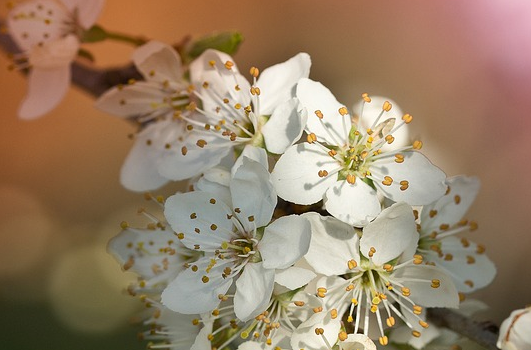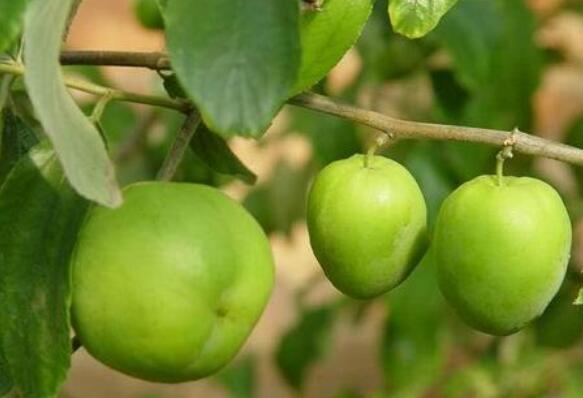When do pear trees usually blossom? What are the commonly used grafting rootstocks?
Pear is a perennial deciduous fruit tree of Rosaceae, which is widely distributed all over the world. Pear fruit is edible and has high nutritional and medicinal value. When do pear trees usually blossom? What are the commonly used grafting rootstocks?

When do pear trees usually blossom?
The phenological phase of pear trees varies greatly because of its wide distribution. In terms of flowering period, pear trees in Huili, Sichuan generally bloom in the first and middle of February and in Yanbian, Jilin Province in mid-May; Yali pears bloom in early March in Changsha, Hunan, and in early May in Beizhen, Liaoning, with a difference of nearly two months. The phenological phase of pear trees cultivated in the same area is also different because of different species and varieties. from bud germination to flowering, Qiuzi pear varieties are the earliest, white pear varieties are a little later, sand pear varieties are later than white pears, and western pear varieties are the latest. The range of variation is about 10 days.
What are the commonly used grafting rootstocks?
(1) du pear: widely wild in North and Northwest provinces. Du pear has deep roots, rich fibrous roots, exuberant seedling growth, cold tolerance, drought tolerance, waterlogging tolerance, strong saline-alkali tolerance, easy to survive when grafted with white pear and foreign pear, young trees grow vigorously, early and high yield, and it is the main rootstock in northern China.
(2) pear: wild in North and South China provinces. The adaptability of the plant is strong, the root system is deep in the soil, but the cold resistance is poor. It is suitable to be used as rootstock under warm and humid conditions, and has strong affinity with pear. It is the main rootstock in southern China, and it is also widely used in Japan and Korea.
(3) Brown pear: wild in the provinces of North China. Jidong uses it as a rootstock, the tree is prosperous, and the fruit is a little later.
(4) Qiuzi pear: the most wild pears are in the three northeastern provinces. This kind of pear is the most cold-resistant, can be resistant to low temperature, more disease-resistant. The seedlings have many whisker roots and exuberant branches, and they are the main rootstocks in Northeast China.
(5) Sand pear: the root system of sand pear seedlings is well developed, the seedlings are well developed, and they are resistant to moisture and heat, and they are used as rootstocks in the south of the Yangtze River. The disadvantage is poor cold resistance.
Time: 2019-03-22 Click:
- Prev

How much is the green jujube sapling price? How many years do you want to bear fruit? What are the planting techniques?
Green jujube is a kind of tropical and subtropical fruit, which is planted as evergreen fruit trees in tropical and subtropical regions and deciduous fruit trees in temperate regions. So how much is the sapling price? How many years do you want to bear fruit? What are the planting techniques? It is reported that green jujube trees are all grafted seedlings and begin to bear fruit in the second year.
- Next

What are the effects and effects of lemon eucalyptus? How to plant it? What are the market prospects?
Lemon eucalyptus is native to Australia and has been introduced in China for nearly a hundred years. It is cultivated in South China, Fujian, Zhejiang, Yunnan, Sichuan and other places. Known as the fairy in the forest. So, what are the effects and effects of lemon eucalyptus? How to plant it? What are the market prospects? What are the effects and effects of lemon eucalyptus
Related
- Fuxing push coffee new agricultural production and marketing class: lack of small-scale processing plants
- Jujube rice field leisure farm deep ploughing Yilan for five years to create a space for organic food and play
- Nongyu Farm-A trial of organic papaya for brave women with advanced technology
- Four points for attention in the prevention and control of diseases and insect pests of edible fungi
- How to add nutrient solution to Edible Fungi
- Is there any good way to control edible fungus mites?
- Open Inoculation Technology of Edible Fungi
- Is there any clever way to use fertilizer for edible fungus in winter?
- What agents are used to kill the pathogens of edible fungi in the mushroom shed?
- Rapid drying of Edible Fungi

